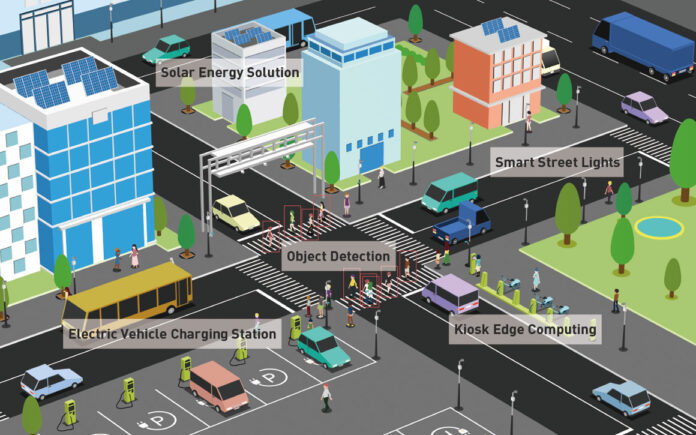To determine a suitable delivery method, it’s important to factor in an infrastructure project’s work schedule, budget, and design. Before making a competitive bid, due diligence is needed to understand the client better. With your team, consider the following questions:
- Do we have the financial capability to bid for the project?
- Do we have the technical expertise to implement the project?
- Which delivery methods will we use?
Typical delivery methods involved when dealing with large projects
Here are some standard delivery methods used on large infrastructure projects.
Design-build model
This method sees a contractor responsible for including design and construction in the project bid. In this model, the contractor bears all risks.
Design, bid, and build model
The design, bid, and build model is the most preferred delivery method when dealing with large government contracts. In this model, the project owner will hire an architect to design the core infrastructure. Therefore, the contractor will only be responsible for actually constructing the designed project.
Integrated project delivery method
When dealing with the integrated project delivery method, you will not be bidding for the project. Instead, the project owner will hire the entire team, including architects, engineers, and contractors. Teams must work together and develop a shared strategy before they can start work.
This delivery method encourages different teams to collaborate because they share risks equally.
Construction management risk method
Another method used to bid on large construction projects is the construction management risk method, which is used when dealing with large, complex infrastructural projects. For this method, the construction manager is chosen based on experience and technical expertise.
This differs from other construction methods, which use price to identify the lowest bidder. Though you will be in charge of construction, the design work will be left to third parties.
Types of construction bids in large infrastructure projects
Open tenders
If you’ve dealt with government tenders before, you’ve probably heard about open tenders. Any construction company can send their bids for consideration in an open tender system. It’s a competitive process that allows emerging construction companies to showcase their capabilities.
One way to stand out when dealing with open tenders is to use construction bidding technology like ALICE, the world’s first construction optioneering platform. Designed to help contractors create competitive bids, the platform can help you reduce project duration time by 17% and cut down on labor costs by up to 14%.
Selective tendering
Another type of construction bid is selective tendering. In this tender type, select bidders are invited based on their track record, financial capability, and scope of work.
Negotiated bid
Lastly, another type of bid worth mentioning is a negotiated bid. In this strategy, bids are negotiated directly with the contractor. Negotiated bids are suitable for highly specialized contracts. One main advantage of negotiated bids is that the project owner can recommend specific materials and their preferred delivery method.
Because the project owner is making these recommendations, it is possible to reduce costs while at the same time ensuring high-quality work.
5 best strategies for comparing competitive bids
1. Use modern technology to your advantage
Large construction projects are generally complicated to implement, with many people and a lot of money involved. To increase the chances of winning a contract, use modern technology to your advantage.
One technology that can be considered is BIM technology. BIM technology not only ensures an integrated workflow, but can be used to create digital representations of a structure and share them in real-time with other key players. Contractors can use virtual reality to get a feel for how the project will look when completed.
2. Review the profitability of the project
Contrary to popular belief, large construction projects do not have large profit margins. The average profit margin is around 15% for large construction projects. 15% doesn’t give you a lot to play around with. If you wrongly estimate costs or don’t anticipate external factors like inflation or increases in the cost of materials, you won’t be able to turn a profit.
Therefore, before making any bid, key stakeholders must consider external factors that can possibly reduce profit margins. You’ll need to sit down with your team to discuss whether the projected profit margin is worth the time or effort. If the margin is too small, the project might not suit you.
3. Take a site tour and talk to local authorities
Before making a bid, take a site tour to understand the project better. While you’re present, identify potential obstacles that might not have been included in the specification documents.
Another benefit of physically going to the potential job site is knowing whether the area is accessible for large equipment. Additionally, your team will be able to figure out if they will require alternative investments, such as electricity infrastructure. While on site, talk with local authorities to understand local laws and regulations.
4. Specialize in a niche
Specialist contractors tend to win more competitive bids than general contractors. Those who specialize in a niche possess technical expertise that makes them more marketable. Once you specialize in a given niche, promote the construction company as the best construction company in that niche.
5. Use technology for accurate estimates
Large construction projects are competitive because the price is a crucial determinant of who gets the contract. To avoid errors and reduce costs, use modern accounting platforms and avoid the use of Excel. Excel is prone to errors and has no cloud-based collaboration features, making it so you have to send documents manually.
In a nutshell, construction companies are recommended to enlist the help of technology to give them a competitive edge when making bids. Technology will also enable them to make accurate estimates and allow them to better present designs and concepts to clients. Also, when bidding for large infrastructural projects, take the time to understand if the project suits your skill set.











